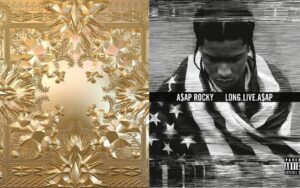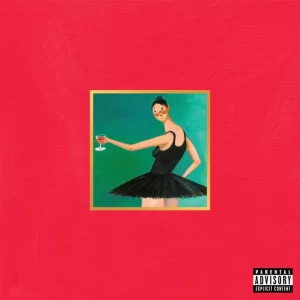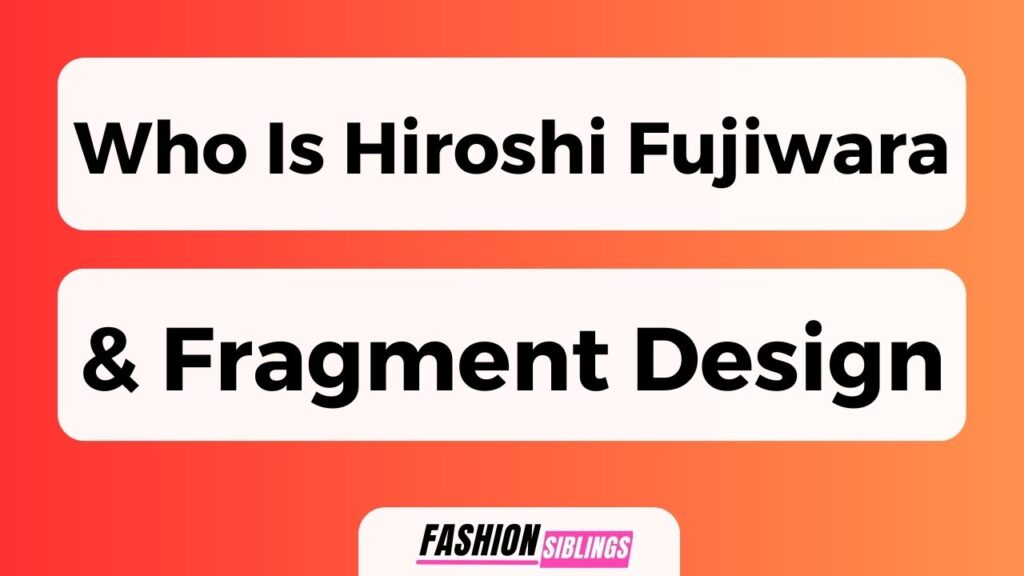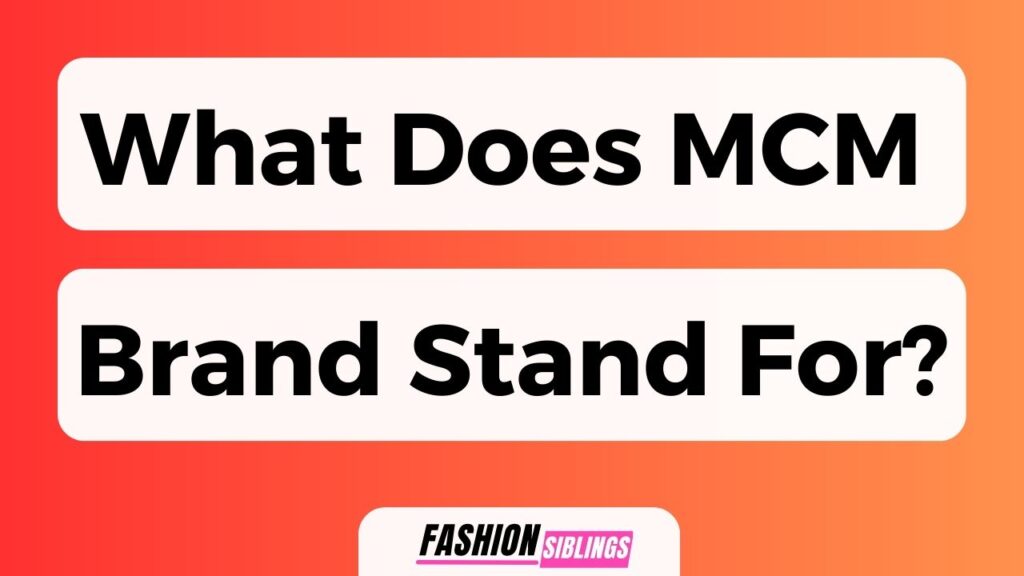Virgil Abloh, the renowned creative director and fashion designer, has left an indelible mark on the world of album cover art. His distinctive style, characterized by bold visuals and minimalistic aesthetics, has garnered both praise and criticism from music enthusiasts and art aficionados alike.
In this article, we delve into the realm of album covers created by Abloh, exploring their artistic merit and impact on popular culture. With a focus on albums such as Kanye West’s ‘My Beautiful Dark Twisted Fantasy,’ Travis Scott’s ‘Rodeo,’ and Frank Ocean’s ‘Blonde,’ we embark on a journey through Abloh’s creative process.
By critically analyzing his use of color palettes, typography choices, and symbolic imagery, we aim to uncover the underlying narratives within each album cover. Furthermore, we will rank these covers based on their artistic innovation, visual coherence, and ability to capture the essence of the music they represent.
Prepare to be immersed in a world where design meets music—a world where Virgil Abloh’s album covers take center stage. With an objective lens and insightful analysis, we invite you to join us in deciphering the captivating stories behind every single one of his creations.
Key Takeaways Of Every Single Virgil Abloh Album Cover Ranked
- Virgil Abloh’s album covers are characterized by bold visuals, minimalistic aesthetics, and innovative design.
- The integration of typography and graphics in Abloh’s album covers adds depth and meaning to the visual composition.
- Abloh’s album covers visually represent the experimental sound of the respective albums and incorporate elements from the artists’ unique sounds.
- Abloh’s album covers challenge traditional notions of album artwork and push boundaries, connecting with contemporary audiences through fashion and street art influences.
Kanye West – “My Beautiful Dark Twisted Fantasy”
Kanye West’s album cover for ‘My Beautiful Dark Twisted Fantasy’ is a visually intricate and thought-provoking artwork designed by Virgil Abloh. This album cover exemplifies the combination of minimalism and experimentalism in album cover design.
The stark white background, devoid of any text or imagery, creates a sense of simplicity and focus on the central motif: an image of a ballerina with wings. This artistic choice reflects Kanye West’s influence on album visuals, as he has consistently pushed boundaries and challenged conventions in his music and visual aesthetics.
The use of a ballerina symbolizes grace and elegance juxtaposed with the dark twisted fantasy theme, creating an intriguing tension between beauty and darkness. Overall, this album cover showcases Abloh’s ability to create visually captivating designs that provoke thought and engage viewers.
Transitioning into the subsequent section about Travis Scott’s ‘Rodeo’, we move from minimalism to a more complex visual style that captures the energy and chaos associated with rodeos.
Travis Scott – “Rodeo”
Travis Scott’s ‘Rodeo’ album cover encapsulates a mesmerizing fusion of vivid colors, striking imagery, and intricate details that captivate the viewer’s attention. The use of symbolism and storytelling in the cover art adds depth to Travis Scott’s artistic vision.
The image features a distorted, half-human-half-animal figure suspended in mid-air with flames engulfing its body. This evokes a sense of chaos and transformation, mirroring the themes explored throughout the album. Additionally, the influence of Travis Scott’s Houston roots is evident in the visual aesthetic of the cover. The cowboy hat worn by the central figure pays homage to Houston’s cowboy culture while also symbolizing Scott’s own journey from his hometown to stardom.
Overall, ‘Rodeo’ album cover showcases Travis Scott’s ability to create visually stunning artwork that complements his music seamlessly.
Moving on to A$AP Rocky – ‘Testing’, this album cover takes a different approach…
A$AP Rocky – “Testing”
The album cover for A$AP Rocky’s ‘Testing’ showcases a minimalist and futuristic design, which captures the essence of the album’s experimental sound.
The use of typography and graphics further enhances the overall aesthetic by creating a visually striking composition.
The connection between the album cover and its experimental sound can be seen in the way that the design pushes boundaries and challenges traditional norms, reflecting the innovative nature of the music itself.
The minimalist and futuristic design
Characterized by its minimalist and futuristic design, Virgil Abloh’s album covers captivate the audience through their sleek and forward-thinking aesthetic, evoking a sense of awe and intrigue. Abloh’s masterful use of minimalism in album cover design allows for a focused visual experience, stripping away unnecessary elements to create a clean and uncluttered composition.
The absence of superfluous details draws attention to key elements, emphasizing the importance of each component within the artwork. Furthermore, Abloh incorporates futuristic elements into his work, pushing the boundaries of traditional album cover design. His use of bold lines, geometric shapes, and vibrant colors creates a sense of dynamism and innovation that resonates with contemporary audiences.
Through his minimalist approach combined with futuristic elements, Abloh’s album covers transcend the realm of mere visuals and become powerful artistic statements. Transitioning into the subsequent section about ‘the use of typography and graphics’, these design choices are further enhanced by his meticulous attention to detail in crafting typography and graphics that complement the overall aesthetic vision.
The use of typography and graphics
Exemplifying Abloh’s attention to detail, the integration of typography and graphics in his album covers adds depth and meaning to the overall visual composition. Abloh has a unique approach to typography, often combining different fonts and sizes to create a visually striking effect. The use of graphics further enhances the album covers, with bold colors and abstract shapes that catch the viewer’s attention. This meticulous attention to detail not only showcases Abloh’s design skills but also creates a strong connection between the visuals and the music itself. It is evident that these album covers have had a significant impact on album sales, as they attract potential listeners with their visually appealing designs. As Abloh’s career has progressed, his design style has evolved, becoming more experimental and pushing boundaries. This evolution can be seen in his use of typography and graphics, which continue to captivate audiences and leave a lasting impression.
Transitioning into the subsequent section about ‘the connection to the album’s experimental sound’, one cannot ignore how Abloh’s careful curation of visuals parallels with his innovative approach towards music production.
| Typography | Graphics | Impact on Album Sales |
|---|---|---|
| Combines different fonts and sizes for visual impact. | Bold colors and abstract shapes catch viewer’s attention. | Attracts potential listeners with visually appealing designs. |
The connection to the album’s experimental sound
Moving on from the discussion of typography and graphics, it is crucial to delve into the connection between Virgil Abloh’s album covers and the experimental sound of the respective albums. The visual representation of an album cover plays a significant role in capturing the essence of the music it represents.
In exploring Abloh’s collaborations with various artists, one can observe how he skillfully incorporates elements from their unique sounds into his designs. Moreover, Abloh’s use of symbolism further enhances this connection by visually translating abstract concepts or emotions conveyed through the music.
By analyzing Abloh’s artistic choices in relation to each album’s experimental sound, we gain a deeper understanding of his ability to visually interpret and complement diverse musical styles. This exploration sets the stage for our next section, where we will examine Jay-Z & Kanye West’s collaborative album ‘Watch The Throne’ and its groundbreaking impact on hip-hop culture.
Jay-Z & Kanye West – “Watch the Throne”
With a bold and regal aesthetic, the album cover of Jay-Z & Kanye West’s ‘Watch the Throne’ features intricate gold detailing against a black background, creating a visually striking composition.
The artistic collaboration between two rap giants is evident in the grandeur of this album cover. It exudes power and dominance, reflecting the impact that Jay-Z and Kanye West have had on rap music. The use of gold symbolizes wealth and success, further emphasizing their status as icons in the industry.
This album cover not only captures attention but also sets the tone for the experimental sound found within ‘Watch the Throne’. The combination of intricate design elements with a dark backdrop creates an atmosphere that is both elegant and mysterious.
Transitioning to Kid Cudi’s ‘Man on the Moon: The End of Day’, we delve into a completely different visual experience that complements his unique musical style.
Kid Cudi – “Man on the Moon: The End of Day”
The album ‘Man on the Moon: The End of Day’ by Kid Cudi is known for its dreamlike and introspective visuals, which are reflected in the album cover.
The cover art features a solitary figure standing on a cliff overlooking a vast landscape, symbolizing the central themes of isolation and self-reflection explored throughout the album.
This visual representation not only captures the essence of Cudi’s introspective lyrics but also contributes to the overall impact and legacy of the album, solidifying his position as an influential artist in hip-hop.
The dreamlike and introspective visuals
Ethereal and thought-provoking, the dreamlike imagery employed by Virgil Abloh in his album covers creates a captivating visual narrative that transports viewers into introspective realms.
With their surreal landscapes, ethereal lighting, and intricate details, Abloh’s designs evoke a dreamlike atmosphere that blurs the boundaries between reality and imagination. The use of symbolism and metaphor adds depth to the visuals, inviting viewers to delve into their own subconscious and explore deeper meanings within the music.
Through his artistry, Abloh masterfully crafts a visual language that complements the album’s themes of isolation and self-reflection. By immersing viewers in these introspective realms, he establishes a connection between the cover art and the emotional journey experienced while listening to the music.
This seamless integration of visual and auditory storytelling elevates Abloh’s album covers beyond mere aesthetics, making them an integral part of the overall artistic experience.
The connection to the album’s themes of isolation and self-reflection
Immersed in its introspective realms, the album covers designed by Virgil Abloh serve as mirrors reflecting the themes of isolation and self-reflection like a calm lake reflecting the moon’s light. Abloh’s artistic evolution can be seen through his use of symbolism in these covers, which adds depth and complexity to the overall visual narrative.
1) Each cover is meticulously crafted to visually represent the emotions and ideas explored within the music, creating a cohesive and immersive experience for the listener.
2) The use of minimalistic elements such as empty spaces, solitary figures, and desolate landscapes evoke a sense of solitude and introspection that perfectly aligns with the album’s themes.
3) Through his artistic choices, Abloh captures a feeling of detachment from reality, emphasizing the isolation that often accompanies self-reflection.
4) The carefully chosen color palette further enhances this sense of isolation by using muted tones and cool hues that create a serene yet melancholic atmosphere.
In this way, Abloh’s album covers not only visually complement but also enhance the music they accompany. Transitioning into ‘the impact on Cudi’s career and the album’s legacy’, one cannot underestimate their significance in shaping both.
The impact on Cudi’s career and the album’s legacy
A notable consequence of the album’s visual presentation lies in its profound impact on Kid Cudi’s artistic trajectory and the lasting imprint it has left on his musical legacy.
Virgil Abloh’s collaboration with Kid Cudi for the ‘Man on the Moon III: The Chosen’ album cover not only showcased Abloh’s talent as a fashion designer but also solidified his influence on young artists.
The striking simplicity of the cover, with its monochromatic color scheme and minimalist design, became an iconic representation of Cudi’s introspective themes of isolation and self-reflection.
Moreover, it extended beyond just music, impacting fashion trends and inspiring a new generation of artists to experiment with visual storytelling in their own works.
This fusion of music and fashion exemplifies Abloh’s visionary approach to creative expression.
Transitioning into Drake’s ‘Take Care’ album, we delve into another artist who utilized visual aesthetics to enhance his musical narrative.
Drake – “Take Care”
Symbolic of Drake’s introspective journey on his sophomore album ‘Take Care’, Virgil Abloh’s album cover captures the essence of vulnerability through a striking image of Drake immersed in darkness, surrounded by a cascade of gold rain.
This iconic artwork has had a profound influence on contemporary hip hop visuals, setting a new standard for artistic expression within the genre. The image conveys a sense of emotional depth and introspection, reflecting the themes explored throughout the album.
The symbolism behind the artwork further enhances its impact, with the dark background representing Drake’s struggles and inner demons, while the golden rain represents success and wealth that cannot shield him from his personal battles. The combination of these elements creates a visually captivating representation of Drake’s complex emotions and experiences.
Transitioning into the subsequent section about ‘frank ocean – ‘blonde’, another artist who utilized album art to convey deeply personal narratives…
Frank Ocean – “Blonde”
Frank Ocean’s album ‘Blonde’ delves into deeply personal narratives, utilizing album art to visually express the introspective nature of his music. ‘Blonde’ takes listeners on an emotional journey with its dreamy and ethereal soundscapes. Ocean masterfully blends elements of R&B and hip hop fusion, creating a unique sonic experience that pushes boundaries within the genre.
The album cover itself is minimalistic, featuring a simple image of Ocean with his signature bleached hair against a plain background. This simplicity reflects the rawness and vulnerability found in the music within. ‘Blonde’ showcases Ocean’s songwriting prowess, as he explores themes such as love, heartbreak, and self-reflection. The album’s poetic lyrics and innovative production make it a standout in contemporary music.
Transitioning into Lil Uzi Vert’s ‘Luv Is Rage 2’, we explore another artist who pushes creative boundaries within hip hop culture.
Lil Uzi Vert – “Luv Is Rage 2”
The album cover for Lil Uzi Vert’s ‘Luv Is Rage 2’ is a vibrant and cartoonish piece of artwork that immediately catches the viewer’s attention.
The use of bright colors and playful imagery creates a visually stimulating experience that mirrors Uzi’s energetic and melodic sound.
By incorporating these elements into the album cover, there is a clear connection between the artwork and the music, enhancing the overall aesthetic appeal of ‘Luv Is Rage 2’.
The vibrant and cartoonish artwork
Lively and whimsical illustrations dominate the artwork, imbuing Virgil Abloh’s album covers with a kaleidoscope of vibrant colors and playful imagery. Abloh’s artistic influences are evident in his use of bold lines, exaggerated forms, and pop culture references. Drawing inspiration from graffiti art, street fashion, and graphic design, Abloh creates visually captivating compositions that captivate the viewer’s attention.
These album covers make a strong cultural impact by challenging traditional notions of what album artwork should look like. They push boundaries and break free from convention, reflecting the essence of Abloh’s avant-garde approach to design. The use of bright colors and playful imagery further enhances the overall aesthetic appeal of these covers, inviting viewers to engage with the music on a visual level.
The use of bright colors and playful imagery
Utilizing a vibrant color palette and whimsical imagery, Abloh’s album covers create a visual feast for the eyes, captivating viewers with their playful and lively compositions.
Each cover is a carefully curated blend of bright colors and bold graphics that draw inspiration from various cultural references. Abloh’s exploration of these references allows him to infuse his designs with elements of fashion and street art, creating a unique aesthetic that resonates with contemporary audiences.
The use of vibrant colors adds an energetic and dynamic quality to the artwork, while the inclusion of playful imagery contributes to its overall lightheartedness. By incorporating these elements, Abloh not only showcases his creativity but also establishes a visual language that connects with the energetic and melodic sound of Uzi’s music effortlessly.
The connection to Uzi’s energetic and melodic sound
Emanating an energetic and melodic aura, Uzi’s music is seamlessly complemented by Abloh’s album covers, which capture the essence of Uzi’s vibrant sound through their visually captivating and dynamic compositions. As a renowned fashion designer, Abloh brings his keen understanding of aesthetics to create album covers that not only reflect Uzi’s style but also make a significant impact in the industry.
The connection between fashion and music is evident in Abloh’s designs, as he incorporates elements such as bold colors, futuristic motifs, and avant-garde typography. His innovative approach has influenced other artists to experiment with their own album covers, pushing boundaries and embracing unconventional designs. The collaboration between Abloh and Uzi showcases the power of visual artistry in enhancing the overall listening experience for fans.
Transitioning into the subsequent section about ‘playboi carti – ‘die lit,’ it becomes apparent that Abloh’s ability to capture the essence of an artist’s sound extends beyond just one individual artist or genre.
Playboi Carti – “Die Lit”
Exuding a dark and enigmatic aura, the album cover for Playboi Carti’s ‘Die Lit’ captivates its audience with its brooding aesthetic and mysterious imagery. This album cover showcases Playboi Carti’s unique style and his ability to blend various genres together.
One notable influence on ‘Die Lit’ is punk rock, which can be seen through the use of bold typography, distorted visuals, and rebellious energy that exudes from the artwork. Additionally, this album cover serves as a fashion statement, reflecting Playboi Carti’s interest in high-end fashion brands such as Off-White and his collaboration with designer Virgil Abloh. By incorporating iconic symbols like skulls and skeletons into the design, Carti establishes himself as an artist who pushes boundaries and embraces a distinct edginess in his music.
Transitioning into the next section about ‘pop smoke – ‘shoot for the stars, aim for the moon’, we delve into another captivating album cover that showcases Pop Smoke’s rise to stardom.
Pop Smoke – “Shoot for the Stars, Aim for the Moon”
With its striking visuals and symbolic imagery, the album cover for Pop Smoke’s ‘Shoot for the Stars, Aim for the Moon’ captures the essence of his meteoric rise in the music industry. Designed by Virgil Abloh, this artwork has had a profound impact on Pop Smoke’s legacy and has become an iconic representation of his artistry.
The use of celestial elements such as stars and moons symbolizes ambition and aspiration, reflecting the title of the album itself. Abloh’s design choices have not only elevated Pop Smoke’s image but have also influenced the hip-hop industry as a whole.
The combination of bold typography, sharp lines, and a minimalistic color scheme creates a visually captivating aesthetic that resonates with fans and establishes Pop Smoke as a force to be reckoned with in contemporary rap music.
Overall, ‘Shoot for the Stars, Aim for the Moon’ showcases Virgil Abloh’s prowess in visual storytelling while solidifying Pop Smoke’s place in hip-hop history.
Frequently Asked Questions
How did Virgil Abloh come up with the concept for the album cover of Kanye West’s ‘My Beautiful Dark Twisted Fantasy’?
Virgil Abloh’s concept for the album cover of Kanye West’s ‘My Beautiful Dark Twisted Fantasy’ was a groundbreaking blend of art and design. Collaborating with Jay Z and Kanye on ‘Watch the Throne’ further showcased his ability to create visually striking and thought-provoking covers.
What is the significance of the artwork on Travis Scott’s ‘Rodeo’ album cover?
The artwork on Travis Scott’s ‘Rodeo’ album cover holds significant meaning through its visual symbolism. An analysis of the cover reveals a chaotic and psychedelic depiction, representing the artist’s journey through fame and the wild nature of his music.
Can you explain the symbolism behind the design of A$AP Rocky’s ‘Testing’ album cover?
The design of A$AP Rocky’s ‘Testing’ album cover incorporates various symbols that reflect experimentation and introspection. It evokes the same level of depth and thoughtfulness as Frank Ocean’s ‘Blonde’ and the political commentary in Kendrick Lamar’s ‘To Pimp a Butterfly’.
How did Virgil Abloh collaborate with Jay-Z and Kanye West on the album cover for ‘Watch the Throne’?
Virgil Abloh collaborated with Jay Z and Kanye West on the album cover for ‘Watch the Throne’. His creative process involved incorporating symbols of power, wealth, and royalty, reflecting the album’s theme of success and dominance. This collaboration showcased Abloh’s ability to visually translate the artists’ vision into a captivating design.
What was the inspiration behind the artwork for Kid Cudi’s ‘Man on the Moon: The End of Day’ album cover?
Exploring the artistic inspiration for Kid Cudi’s ‘Man on the Moon: The End of Day’ album cover reveals a surrealistic representation of a moonlit landscape, symbolizing Cudi’s introspective journey through darkness and self-discovery. This artwork effectively captures the themes and atmosphere of the album. Analyzing the symbolism behind A$AP Rocky’s ‘Testing’ album cover shows a distorted image of Rocky submerged in water, reflecting his experimental approach to music and willingness to push boundaries creatively. The juxtaposition of elements creates an enigmatic visual that mirrors the eclectic nature of the album.
Conclusion
The album covers curated by Virgil Abloh have become iconic in the music industry. From Kanye West’s daring and visually stunning ‘My Beautiful Dark Twisted Fantasy’ to the raw and captivating ‘Shoot for the Stars, Aim for the Moon’ by Pop Smoke, each cover tells a story that resonates with the audience.
Abloh’s artistic vision transcends mere visuals, evoking emotions and sparking conversations about identity, society, and art itself. His ability to capture the essence of an album through his designs is truly remarkable.
Virgil Abloh’s work is a testament to his unparalleled artistry and creative genius.








